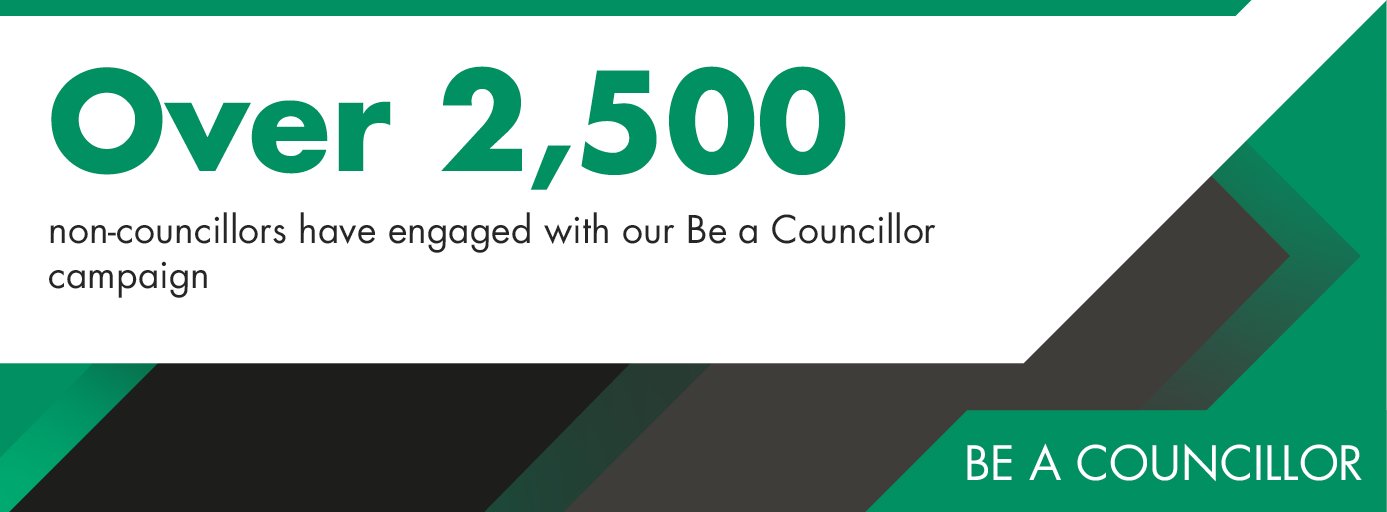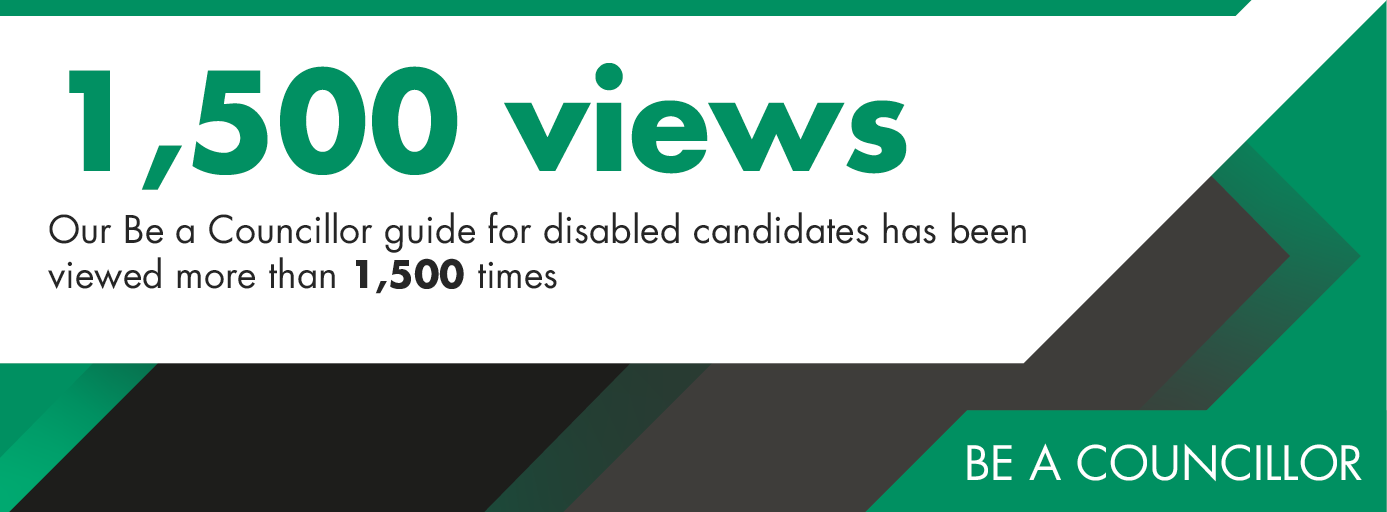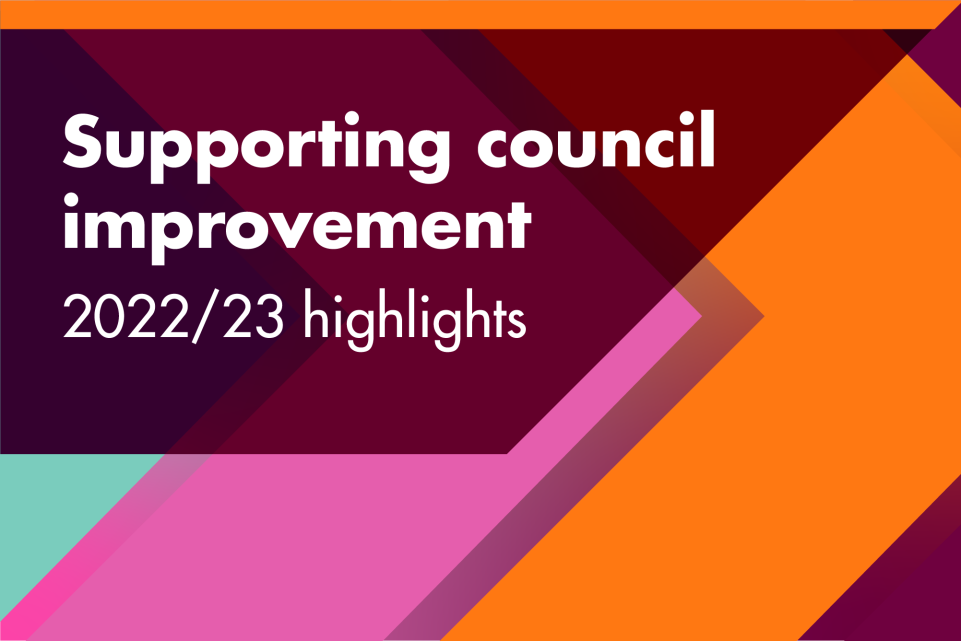Resetting the relationship between local and national government. Read our Local Government White Paper
Be a Councillor is our national campaign to raise awareness of the councillor role and to help people to find out more about becoming a councillor. This year’s campaign has seen an additional focus on improving representation of disabled people, and a targeted campaign is underway to attract more disabled candidates to the role.
Overview
Our Be a Councillor campaign aims to ensure better representation in local government of the communities it serves, with the diversification of skills, experience and knowledge from new talent attracted to the role. This is achieved through information sharing via the Be a Councillor website and social media, creating tools and resources for councils to use in their own local campaigns, and running events. The campaign also partners with expert organisations to better understand and address the barriers that under-represented groups face to becoming a councillor. This year’s campaign has seen an additional focus on improving representation of disabled people, and a targeted campaign is underway to attract more disabled candidates to the role.
Highlights
During 2022/23, highlights and achievements of the Be a Councillor campaign included
- more than 2,500 non-councillors were engaged through the campaign, including through enquiries and events
- more than 50 councils received support from the Be a Councillor campaign
- there were more than 100,000 views of the Be a Councillor website
- more than 650 non-councillors subscribed to the Be a Councillor e-bulletin in its first year
- there were more than 1,500 views of our Be a Councillor guide for disabled candidates
- our @BeaCouncillor Twitter page received more than 80,000 impressions.
Our Be a Councillor campaign at Bristol City Council (case study)
What was the challenge you were seeking to address with the help of the Be a Councillor team?
We wanted to encourage people to stand for public office, as part of a wider democratic engagement project established to understand and overcome the barriers preventing residents from playing an active role in democratic processes.
What solutions did you deliver together (for example, events)?
We hosted two ‘Be a Councillor’ sessions (online and in person) with the aim of engaging with different equality groups and demographics in the city in order to inform prospective candidates on the role of a councillor in time for the 2024 elections selections process.
What was the impact?
Overall, we had 30 people in attendance, almost 100 people engaged with the Eventbrite listings. We developed a Councillor Shadowing Toolkit and, a Local Democracy webpage was set up to promote the many ways residents can get involved in local democracy in Bristol. We reached out to over 50 voluntary and community organisations in the city to promote the events and the events were shared on the council’s social media which has thousands of followers. Finally, we followed up with a resource pack to all attendees and stakeholders.
How is the approach being sustained, and what lessons were learned?
We maintain our commitment to encourage people from underrepresented groups (demographics and geography) to stand for public office and will hold similar events in advance of the next election cycle. Some of the feedback received was the appetite for trialling these events in different parts of the city. In addition, we continue to promote equality and inclusion in public participation and raise awareness and signposting to other areas of civic participation, for example, registering to vote, participation in meetings and volunteering or community organising.



